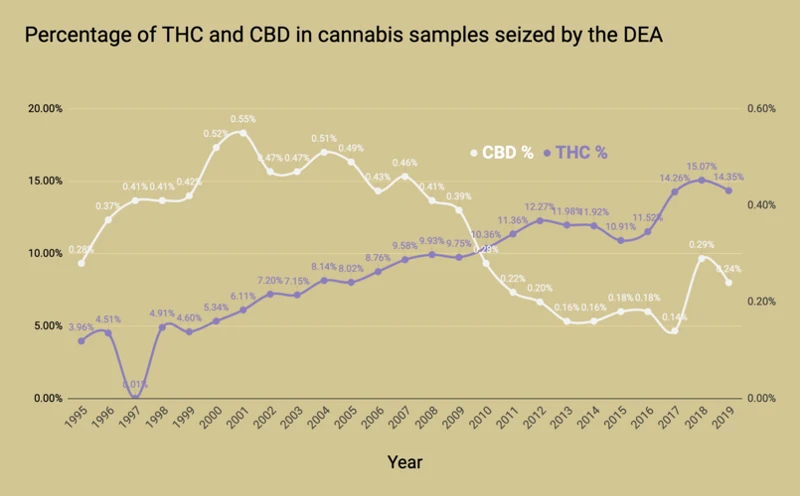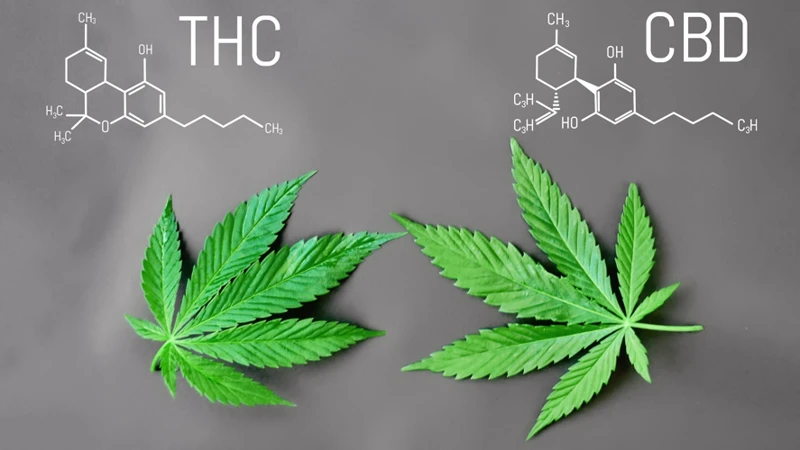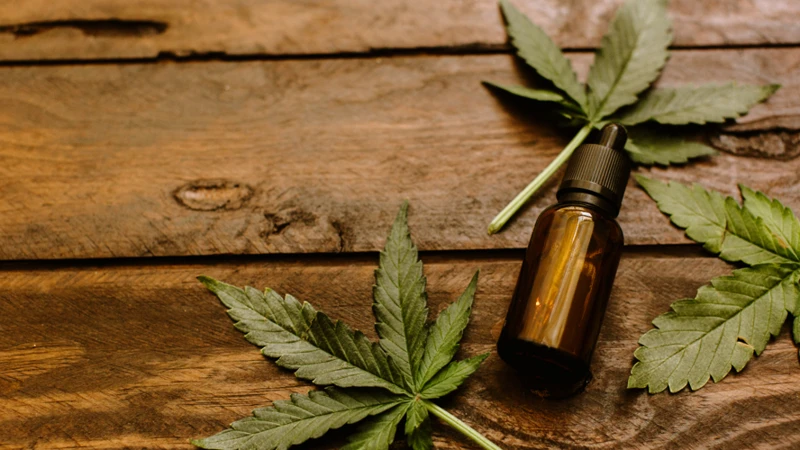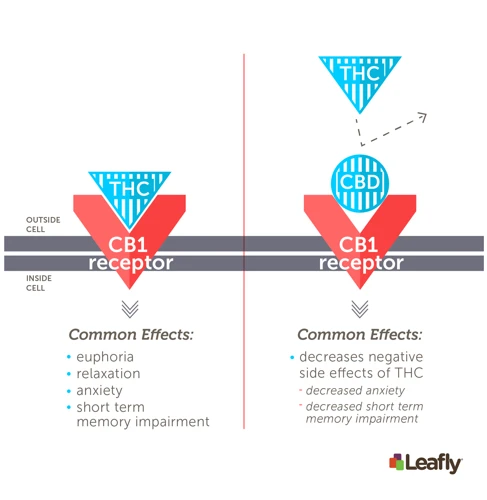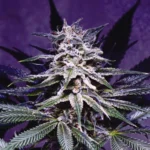
How THC/CBD Ratio Impacts Taste and Smell of Cannabis: A Guide
As the popularity of cannabis continues to grow, so does the interest in its taste and smell. Many people wonder if the THC/CBD ratio affects these aspects of the plant. While some believe that these cannabinoids play a minimal role, others argue that they are the key to unlocking a strain’s full potential. Adding to the complexity, terpenes also play a significant role in the overall taste and smell of cannabis. So, what is the truth? In this article, we explore the impact of THC and CBD ratio on the taste and smell of cannabis, and provide tips on how to get the most out of your cannabis experience.
What is THC/CBD Ratio?
Contents
When it comes to cannabis, there are several terms that every enthusiast should know, and one of them is THC/CBD ratio. This term refers to the proportion of tetrahydrocannabinol (THC) to cannabidiol (CBD) in a particular strain. Understanding this ratio can help you determine the type of high you’ll experience, as well as the potential medical benefits. However, if you’re new to cannabis, the concept of THC/CBD ratio might be confusing at first. Let’s dive into this topic and explore what it means and why it’s important.
The Benefits of THC/CBD Ratio
The THC/CBD ratio plays a crucial role in the effects of cannabis. Here are some of the benefits of finding the right THC/CBD ratio:
- Pain Management: CBD has anti-inflammatory properties, and a higher CBD ratio can help reduce pain and inflammation.
- Mood Enhancement: THC has mood-enhancing properties, and a higher THC ratio can help boost your mood and make you feel more relaxed.
- Reduced Anxiety: CBD can help reduce anxiety, and a higher CBD ratio can be beneficial for those who want to avoid the anxiety or paranoia that can be associated with high doses of THC.
- Reduced Psychoactive Effects: CBD can counteract the psychoactive effects of THC, reducing paranoia and making the experience less intense.
- Treat Seizures: CBD has been shown to be effective in treating seizures, and a higher CBD ratio can be beneficial for those who suffer from epilepsy.
It’s important to note that the optimal THC/CBD ratio will vary depending on the individual and their desired effects. It’s important to experiment with different ratios to find what works best for you.
The Role of Terpenes
Terpenes are organic compounds found in cannabis plants that are responsible for its distinct aroma and flavor. These compounds are found in the resinous trichomes on the surface of the cannabis plant. There are over 100 different terpenes in cannabis, each with its own unique properties.
Terpenes serve a variety of important functions within the cannabis plant. They help to protect the plant by acting as a natural insect repellent, fungicide, and antibacterial agent. They also play a role in plant pollination and seed dispersal.
Moreover, terpenes play a significant role in the way we experience cannabis by affecting both its taste and smell. The presence of terpenes can greatly enhance the overall quality of the experience. For example, some terpenes have been shown to have anti-inflammatory and anti-anxiety properties, while others are believed to enhance a sense of relaxation or provide an energy boost.
The role of terpenes shouldn’t be overlooked when it comes to selecting cannabis strains, as their presence can impact the desired effect. For instance, myrcene is commonly found in indica strains and is associated with a relaxing effect, making it useful for those seeking to relieve symptoms of anxiety or stress. On the other hand, limonene is often found in sativa strains and is believed to provide an energizing effect that can help with creativity or productivity.
Terpenes also have a synergistic effect with THC and CBD, influencing the overall experience of using cannabis. This phenomenon is what’s known as the “entourage effect.” Essentially, terpenes can enhance or modify the effects of THC and CBD, making the experience more complex and nuanced.
When it comes to deciding which cannabis strains to use, it is important to take the role of terpenes into account. The combination of THC, CBD, and terpenes can create a unique set of effects, thus choosing strains with specific terpenes can help you to achieve the desired experience.
How THC/CBD Ratio Affects Taste
When it comes to consuming cannabis, the taste is just as important as the effects. The flavor can vary widely between strains, with some being sweet and fruity while others are earthy and spicy. But did you know that the ratio of THC to CBD in a strain can also affect its taste? In this section, we’ll explore the ways in which the THC/CBD ratio can impact the flavor of your cannabis consumption experience. From the compounds that contribute to a delicious taste to how terpenes work with THC and CBD, we’ll cover everything you need to know about how the ratio of these cannabinoids impacts the taste of your bud.
What Makes Cannabis Taste Good?
Cannabis is a complex plant with various chemical compounds that combine to create its unique taste and flavor. Here are some of the key factors that make cannabis taste good:
- Terpenes: Terpenes are organic hydrocarbons that are found in many plants, including cannabis. They are responsible for the plant’s distinct aroma and flavor. Terpenes interact with other chemicals in the plant, such as THC and CBD, to create a specific taste and scent. Some of the most common terpenes found in cannabis include myrcene, limonene, pinene, and caryophyllene.
- Cannabinoids: Cannabis contains over 100 different cannabinoids, including THC and CBD. These compounds are responsible for the psychoactive effects of cannabis and can also affect the taste and flavor of the plant. Different strains of cannabis have varying ratios of THC and CBD, which can alter the taste and aroma.
- Flavonoids: Flavonoids are a class of plant pigments that contribute to the color of fruits and vegetables. In cannabis, flavonoids play a role in the plant’s taste and aroma. They also have potential health benefits and may work together with other compounds in the plant to enhance the overall effects.
- Curing and drying: Properly curing and drying cannabis is essential for maximizing its flavor and taste. If cannabis is dried too quickly, it can degrade the taste and aroma. On the other hand, over-drying can cause the plant to lose its moisture and flavor.
- Genetics and growing conditions: The genetics of the cannabis plant and the conditions it is grown in can also impact its taste and flavor. Different strains have different chemical compositions that can create unique flavors and aromas. Factors such as soil conditions, lighting, and humidity can also impact the quality of the plant.
The taste of cannabis is a complex interplay between various chemical compounds and environmental factors. By understanding these factors, growers and consumers can select strains that provide the desired taste and flavor profiles.
The Impact of THC and CBD on Taste
THC and CBD both have a significant impact on the taste of cannabis. Here are some specific ways in which the THC/CBD ratio affects taste:
- Bitterness: THC and CBD can contribute to bitterness in cannabis. High levels of THC can make the taste more harsh and bitter, while high levels of CBD can make it taste more earthy or herbal.
- Sweetness: THC can also make cannabis taste sweeter, with some strains even having a fruity or candy-like flavor. In contrast, CBD does not have a significant effect on sweetness.
- Spiciness: Some strains with high levels of THC can have a spiciness or pepper-like flavor, while strains high in CBD tend to have a more mellow, subdued taste.
It’s important to note that taste is not just influenced by THC and CBD levels, but also by the presence of terpenes, which are aromatic compounds found in cannabis. Terpenes are responsible for the distinctive flavors and scents of different strains.
How Terpenes Affect Taste
Terpenes, which are aromatic compounds found in plants, play a critical role in creating the unique taste profiles of each cannabis strain. There are over 200 known terpenes in cannabis, each with its own distinct flavor and aroma.
Myrcene, for example, is a terpene often found in indica strains and is known for its musky, earthy aroma. It has a pronounced effect on the taste and smell of cannabis, giving it a spicy, clove-like flavor that is often described as “earthy” or “grape-like.”
Limonene, on the other hand, is a citrusy terpene that is dominant in many sativa strains, giving them a bright, zesty flavor. It can also have a slight peppery undertone, adding complexity to the taste profile.
The presence of terpenes, and the specific terpenes present, can dramatically impact the overall taste of the cannabis. For example, a strain that is high in myrcene will have a significantly different taste than one that is high in limonene.
In addition to affecting taste, terpenes are also known to impact the psychoactive effects of THC and CBD. It is thought that terpenes may work in concert with cannabinoids to enhance or modify their effects. This phenomenon, known as the entourage effect, is a topic of much research in the cannabis industry.
Terpenes are an important aspect to consider when selecting a cannabis strain based on taste preferences. Understanding the unique properties and flavors of different terpenes can open up a whole world of flavors and experiences for cannabis enthusiasts.
How THC/CBD Ratio Affects Smell
Have you ever wondered what gives cannabis its distinct aroma? The answer lies in the plant’s complex combination of compounds, most notably THC and CBD. However, it’s not just the ratio of these two cannabinoids that affects the smell of cannabis. Terpenes, the aromatic oils found in the plant, also play a significant role. In this section, we’ll explore how the THC/CBD ratio impacts the aroma of cannabis, as well as the role of terpenes in creating a strain’s unique scent.
What Gives Cannabis its Aroma?
Cannabis is known for its strong aroma, but what exactly gives it that distinctive smell? The answer lies in a complex mixture of compounds known as terpenes. Terpenes are essential oils that are secreted by the same glands that produce cannabinoids like THC and CBD. However, unlike cannabinoids that can have psychoactive effects, terpenes are responsible for the fragrance and flavor of cannabis strains.
Terpenes are produced in the trichomes of cannabis plants, which are tiny hair-like structures that cover the flowers and leaves. There are over 200 different terpenes that have been identified in cannabis, each with its own unique scent and flavor profile. Some of the most common terpenes found in cannabis include pinene, limonene, myrcene, and linalool.
Pinene gives cannabis strains a pine-like aroma, while limonene has a citrusy scent that is frequently found in strains with a fruity flavor. Myrcene, on the other hand, can have an earthy or musky aroma, and is often associated with indica strains. Linalool is a floral terpene that is commonly associated with lavender and can have a calming effect.
The combination of terpenes present in a specific strains will determine its overall aroma profile. However, aroma can be influenced by a number of environmental factors as well. Climate, soil, humidity, and growing techniques can all play a role in the development of a strain’s aroma. Even the time of day can affect the potency of a strain’s aroma, with many strains being more fragrant in the late afternoon or early evening.
Terpenes are an important component of what gives cannabis its distinctive aroma. Understanding the role of terpenes in the development of strains can help you make more informed choices about the types of cannabis you prefer.
The Impact of THC and CBD on Smell
The impact of THC and CBD on the smell of cannabis can be complex and nuanced. Depending on the specific strains and concentrations of these compounds, the aroma can vary greatly. To better understand this, let’s take a look at the table below:
| THC:CBD Ratio | Smell |
|---|---|
| High THC, Low CBD | Typically has a strong, pungent aroma with hints of earthiness or skunkiness. |
| High CBD, Low THC | The smell is typically less pungent and may have floral or fruity notes. |
| 1:1 THC:CBD | The smell is a balance of the two, with a mix of pungent and fruity/floral notes. |
As we can see, the ratio of THC to CBD can have a significant impact on the smell of cannabis. When a strain has a high THC content and low CBD content, it tends to have a strong and pungent aroma with earthy or skunky notes. This is because THC is a volatile compound that easily evaporates and creates an odor.
On the other hand, strains with high CBD content and low THC content may have a less pungent aroma and may instead have floral or fruity notes. CBD is a non-volatile compound, meaning it is not as easily evaporated as THC and therefore does not create as strong of an odor.
When the THC:CBD ratio is balanced at 1:1, the aroma is a mix of pungent and fruity/floral notes. This is because the two compounds work together to create a complex and nuanced aroma.
It’s important to note that other factors such as terpenes and growing conditions can also impact the smell of cannabis. However, the ratio of THC to CBD is a crucial factor to consider when selecting strains based on aroma.
How Terpenes Affect Smell
Terpenes are organic compounds that are responsible for the aroma and flavor of cannabis. They are produced in the same glandular trichomes as THC and CBD. There are over 200 different terpenes found in cannabis, and each one has a unique aroma and potential therapeutic benefits.
Terpinolene is a terpene that has a woody, piney aroma with hints of floral and herbal notes. It is commonly found in strains like Jack Herer and XJ-13.
Myrcene is one of the most abundant terpenes in cannabis and has a musky, earthy aroma with notes of fruity and spicy flavors. It is common in strains like Blue Dream and Granddaddy Purple.
Linalool has a floral aroma with hints of lavender, citrus, and mint. It is used in aromatherapy for its calming and relaxing effects. It is commonly found in strains like Amnesia Haze and LA Confidential.
Pinene has a fresh, piney aroma with notes of citrus and spice. It is used in traditional medicine for its anti-inflammatory and bronchodilator effects. It is commonly found in strains like Blue Cheese and Sour Diesel.
Limonene has a citrusy aroma with hints of lemon and orange. It is commonly used for its uplifting and energizing effects. It is found in strains like Super Lemon Haze and Wedding Cake.
These terpenes, along with others, work together with the THC and CBD in the cannabis plant to create a unique aroma and flavor profile for each strain. The terpenes not only affect the smell and taste of the cannabis, but they may also play a role in the potential therapeutic benefits of the plant. By selecting strains with specific terpene profiles, users can tailor their cannabis experience to their individual needs and preferences.
Selecting Strains Based on THC/CBD Ratio
When it comes to selecting cannabis strains, the THC/CBD ratio is a crucial factor to consider. This ratio determines the balance between the psychoactive effects of THC and the therapeutic benefits of CBD. Depending on your preferences and needs, you may want to look for strains with higher levels of THC or CBD. However, it’s important to note that the ratio doesn’t just affect the potency and effects of the strain—it also plays a significant role in its taste and smell. In this section, we’ll discuss how to select strains based on their THC/CBD ratio and how it influences their flavor and aroma.
The Top Strains for Flavor
When it comes to selecting strains based on taste, there are several options that stand out. These include:
- Blue dream: A hybrid strain that is known for its sweet, berry-like flavor with hints of earthiness and spiciness.
- Girl Scout cookies: Another hybrid strain with a sweet and earthy flavor, often described as having a hint of mint or chocolate.
- Pineapple express: This sativa-dominant strain has a sweet and tropical flavor with notes of pineapple and mango.
- Strawberry cough: A sativa strain that has a sweet and strawberry-like flavor with hints of earthiness and skunkiness.
- Sour diesel: This sativa-dominant strain has a pungent and skunky flavor with hints of citrus and diesel fuel.
These strains are known for their unique and enjoyable flavors, making them popular among those who prioritize taste. However, it’s important to keep in mind that individual preferences may vary and it’s always a good idea to sample different strains to find the one that suits your taste buds the best.
The Top Strains for Aroma
When it comes to selecting strains for their aroma, there are several options available based on the THC/CBD ratio. Here are some top strains to consider:
| Strain Name | Aroma Profile |
|---|---|
| Blue Dream | Has a sweet, fruity aroma that is reminiscent of blueberries. It also has a floral undertone thanks to the presence of the terpene, myrcene. |
| Sour Diesel | Has a pungent, diesel-like aroma that is also slightly sweet. Its unique scent is due to a combination of terpenes, including limonene and beta-caryophyllene. |
| Girl Scout Cookies | Has a sweet, earthy aroma with a hint of mint. This unique scent comes from a combination of terpenes including limonene, beta-caryophyllene, and linalool. |
| OG Kush | Has a complex aroma that is both earthy and woody, with hints of citrus and diesel. Its aroma is attributed to a combination of terpenes, including pinene and humulene. |
Blue Dream is a popular strain known for its hybrid effects and sweet aroma. Its terpene profile is dominated by myrcene, which gives it its floral undertones.
Sour Diesel has a distinctive aroma that is a result of a combination of terpenes, including limonene and beta-caryophyllene. This strain can be energizing and uplifting, making it a go-to for many cannabis enthusiasts.
Girl Scout Cookies is another popular strain known for its unique aroma. It has a sweet, earthy scent with hints of mint thanks to its terpene profile, which includes limonene, beta-caryophyllene, and linalool.
OG Kush is a classic strain with a complex aroma profile. Its terpenes include pinene and humulene, giving it an earthy and woody scent with hints of citrus and diesel. It is often used for its relaxing effects.
When selecting strains based on aroma, it is important to consider the terpene profile in addition to the THC/CBD ratio. These compounds work together to create the unique scent and effects of each strain.
Tips for Maximizing Taste and Smell
One of the most rewarding experiences of using cannabis is enjoying its unique taste and aroma. However, achieving maximum enjoyment requires a bit of effort on your part. It’s crucial to know the right methods for harvesting, curing, and storing your cannabis to ensure it retains its optimum flavor and scent. In this section, we’ll guide you through some simple yet effective tips for embracing the full potential of your cannabis taste and aroma. So sit tight and let’s dive into the world of tantalizing cannabis flavors and scents!
Harvesting at the Right Time
One of the most important factors that can affect the taste and smell of cannabis is harvesting at the right time. Harvesting at the right time is a skill that requires experience and attention to detail. The best time to harvest cannabis depends on the strain and the intended effect, and it can be difficult to determine the optimal time.
Factors to Consider
When deciding when to harvest cannabis, there are several factors to consider. The first is the color of the trichomes, which are the small, hair-like structures that cover the buds. The trichomes are the part of the plant that contains the cannabinoids and terpenes, and they are responsible for the taste and smell of the cannabis. When the trichomes are clear or milky, the cannabis is not yet ready to harvest. When they turn amber, it is time to harvest.
Another factor to consider is the maturity of the plant. Cannabis plants mature at different rates depending on the strain, and it is important to monitor the plant throughout the growing cycle to determine when it is ready for harvest. The buds should be fully developed and the pistils should have turned brown or red.
Why Harvesting at the Right Time is Important
Harvesting cannabis at the right time is important because it can affect the taste and smell of the cannabis. If the plant is harvested too early, the cannabinoids and terpenes may not have fully developed, resulting in a weaker taste and smell. If the plant is harvested too late, the cannabinoids and terpenes may have started to degrade, resulting in a harsher taste and smell.
How to Harvest Cannabis
To harvest cannabis, use sharp scissors or shears to cut the buds from the plant. Use a drying rack or hang the buds upside down to dry, and then cure the cannabis for several weeks in an airtight container. This will help to preserve the taste and smell of the cannabis.
Harvesting cannabis at the right time can be a challenge, but it is worth the effort. By monitoring the trichomes and the maturity of the plant, you can ensure that your cannabis has the best possible taste and smell.
Curing Cannabis Properly
Properly curing cannabis is essential for maximizing its taste and aroma. Here are some tips for curing cannabis:
| Tip | Description |
|---|---|
| Burp the Jars | During the first week of curing, it’s important to “burp” the jars to release any built-up moisture and gases. Simply open the jar for a few minutes each day to allow fresh air to circulate. |
| Monitor Humidity | Aim for a humidity level of 60-65%. Too much humidity can lead to mold growth, while too little can dry out the buds and impact their flavor and aroma. |
| Avoid Light and Heat | Store the jars in a cool, dark place to prevent the buds from being exposed to light and heat, which can break down cannabinoids and terpenes. |
| Cure for Two Weeks | For optimal taste and aroma, cure the buds for at least two weeks in jars before consuming. Some strains may benefit from a longer curing time. |
By following these tips, cannabis can be cured properly and preserve its unique taste and aroma that comes from the THC/CBD ratio and terpenes.
Storing Cannabis
Proper storage of cannabis is critical for preserving its taste and smell. Here are some tips for storing cannabis:
| Tip | Description |
|---|---|
| Airtight Container | Store your cannabis in an airtight container to prevent exposure to oxygen. Exposure to oxygen can cause the breakdown of terpenes, which are responsible for the aroma and flavor of cannabis. |
| Mason Jar | A mason jar is an excellent choice for storing cannabis because it provides an airtight seal and protects the cannabis from light. Exposure to light can cause the degradation of THC, which can result in a decrease in potency. |
| Cool and Dark | Store your cannabis in a cool and dark place. Heat can cause the breakdown of THC, resulting in a decrease in potency. Light can also cause the degradation of THC and other cannabinoids. |
| Relative Humidity | The ideal relative humidity for storing cannabis is between 59% and 63%. If the humidity is too low, the cannabis can become dry and brittle. If the humidity is too high, the cannabis can develop mold or mildew. |
| Don’t Freeze | Do not store cannabis in the freezer. Freezing can cause the trichomes, which contain the cannabinoids and terpenes, to become brittle and break off. This can result in a loss of potency and flavor. |
By following these tips, you can help ensure that your cannabis maintains its taste and smell for as long as possible.
Conclusion
As cannabis becomes more mainstream, consumers are gaining a better understanding of the factors that affect the smell and taste of the herb. From THC and CBD ratios to terpenes, it’s clear that there are many factors that play a role in the overall experience of smoking or consuming cannabis.
One of the most important takeaways from this discussion is that the THC/CBD ratio can have a significant impact on both the taste and smell of cannabis. While higher THC strains tend to have a more pungent aroma, CBD can help to balance out the flavor profile for a more nuanced taste.
In addition to CBD, terpenes are another key component to consider when it comes to taste and smell. These compounds can add unique flavors and aromas to cannabis strains, and they can also interact with THC and CBD to create specific effects.
Ultimately, selecting a strain based on its THC/CBD ratio and terpene profile can help you find the perfect flavor and aroma for your preferences. Whether you’re looking for a sweet, fruity taste or a skunky, earthy scent, there’s a strain out there that’s sure to satisfy.
Of course, it’s not just the strain itself that affects the taste and smell of cannabis. Harvesting, curing, and storing practices can also impact the final product. By harvesting at the right time, curing properly, and storing cannabis in an airtight container, you can ensure that your herb retains its flavor and aroma for as long as possible.
At the end of the day, the taste and smell of cannabis are important factors to consider for anyone who wants to experience the full benefits of the plant. By experimenting with different strains, ratios, and terpene profiles, you can find the perfect combination that suits your taste buds and enhances your overall experience.
Frequently Asked Questions
What Is The Ideal THC/CBD Ratio?
There is no universal ideal THC/CBD ratio as it largely depends on individual preferences and desired effects. However, strains with balanced ratios of THC and CBD are generally preferred for those looking for both medicinal and recreational benefits.
What Are The Benefits of THC/CBD Ratio?
The benefits of THC/CBD ratio vary, depending on the individual. However, balanced ratios of both cannabinoids may offer a more well-rounded medicinal and recreational experience.
How Do Terpenes Affect the Taste and Smell of Cannabis?
Terpenes are aromatic compounds found in cannabis that can greatly affect both the taste and smell of the plant. They are responsible for creating distinct flavors and scents, similar to how they are found in other plants, such as lavender or pine.
Cannabis tastes good when it contains a proper balance of terpenes, moisture, and cannabinoids. The terpenes in particular contribute significantly to the overall taste of the plant.
Can THC and CBD Affect How Cannabis Smells?
Yes, both THC and CBD can affect how cannabis smells. THC can produce a more skunky, pungent odor, while CBD can produce a more subtle, earthy aroma.
What Are The Best Strains For Flavor?
The best strains for flavor generally feature balanced ratios of THC and CBD, high concentrations of terpenes, and pronounced flavors. Some popular strains that are known for their exceptional taste include Pineapple Express and Strawberry Cough.
What Are The Best Strains For Aroma?
The best strains for aroma are those that are rich in terpenes and have a distinct, pleasant smell. Some popular strains that are known for their exceptional aroma include Jack Herer and Blueberry.
Why Is Harvesting Cannabis At The Right Time Important?
Harvesting cannabis at the right time is important because it can greatly affect the overall taste and smell of the plant. Harvesting too early can lead to a less potent scent and flavor, while harvesting too late can produce an overly earthy taste and smell.
What Is the Best Way To Store Cannabis?
The best way to store cannabis is in an airtight container, away from sunlight and excessive heat or moisture. Mason jars or specially-designed storage containers can help to keep the plant fresh and preserve its aroma and flavors.
Can You Improve The Taste and Smell of Cannabis Through Curing?
Yes, curing cannabis properly can greatly improve its overall taste and smell. Curing involves allowing the plant to dry slowly in a controlled environment, which can lead to a more aromatic and flavorful experience.

